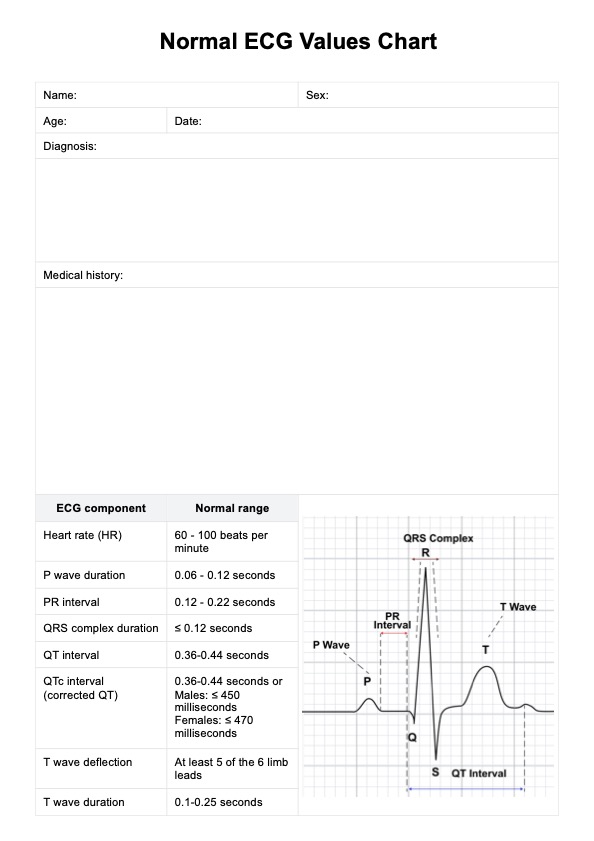Normal electrocardiogram (ECG) values include a heart rate of 60-100 beats per minute, a PR interval of 0.12-0.22 seconds, a QRS complex duration of ≤ 0.12 seconds, and a QT interval of 0.36-0.44 seconds, among others, as outlined in our template.

Normal ECG Values Charts
Understand the basics of an ECG with our handy Normal ECG Values Chart. Download our free PDF today to learn more!
Use Template
Normal ECG Values Charts Template
Commonly asked questions
Abnormal electrocardiogram (ECG) readings may include prolonged QT intervals, ST segment elevation or depression, T wave inversion, and abnormal QRS complex duration, all of which could indicate underlying cardiac conditions.
The most common electrocardiogram (ECG) problems include atrial fibrillation, ventricular hypertrophy, myocardial infarction, and heart blocks, all of which can be detected through careful analysis of the ECG components.
EHR and practice management software
Get started for free
*No credit card required
Free
$0/usd
Unlimited clients
Telehealth
1GB of storage
Client portal text
Automated billing and online payments











